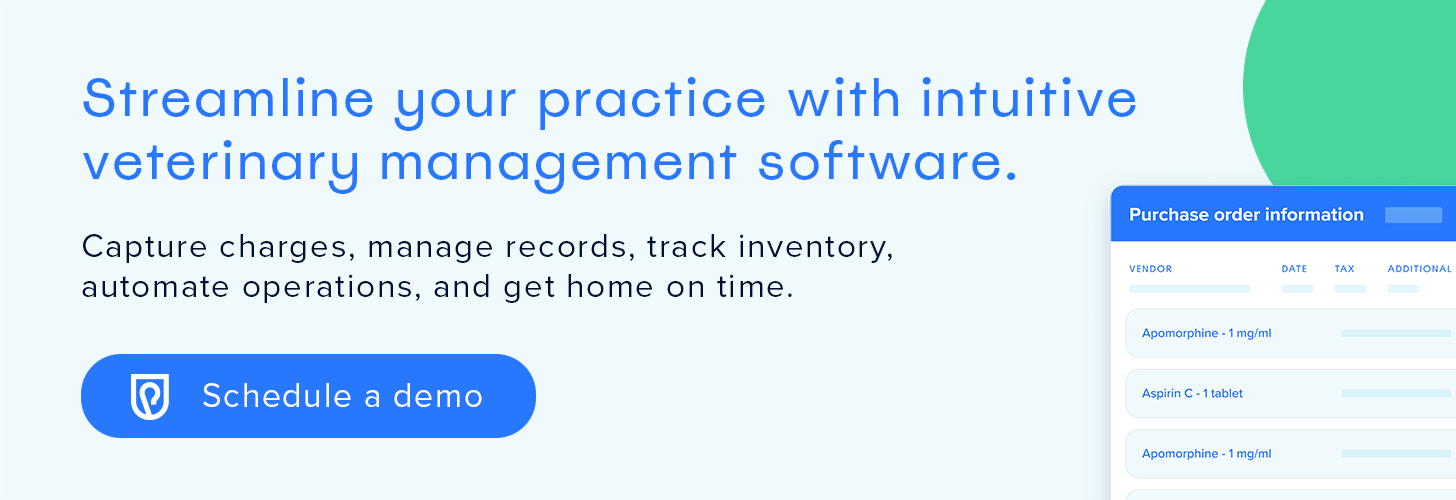Managing Controlled Substances: Veterinary Compliance and Legal Concerns

While veterinarians cannot practice quality medicine without controlled substances, these drugs come with a lot of responsibility. Veterinary professionals must navigate a complex maze of federal and state regulations to keep patients safe, stay compliant, and prevent employees from possible drug misuse or diversion (i.e., unlawfully channeling drugs into illegal markets). They also face liability if a controlled drug is administered incorrectly.
It’s a lot to manage, and staying fully compliant can be more challenging than many veterinary leaders expect. The Shepherd team breaks down what practices need to know about controlled substance requirements—and how the right veterinary software tools can make handling them simpler, safer, and more efficient.
Controlled substances 101
The Drug Enforcement Administration (DEA) sorts controlled substances into five tiers (i.e., schedules) based on medical utility and abuse potential.
- Schedule I drugs: High abuse potential with no accepted medical purpose (e.g., heroin).
- Schedule II drugs: High abuse potential, but with accepted medical uses (e.g., fentanyl, hydrocodone).
- Schedule III–V drugs: Low to moderate abuse potential with increasing medical use (e.g., ketamine, tramadol).
The FDA and DEA work together to classify drugs into various schedules and adjust them as new information becomes available. However, federal schedules and veterinary controlled substance laws may differ from state regulations. Some states mirror DEA schedules, while others impose more restrictive designations.
The variations and discrepancies between state and federal laws can make compliance feel like a minefield. Teams must understand the rules in their state to ensure complete veterinary compliance.
State-level scrutiny
State rules around veterinary compliance and controlled substances vary considerably. For example:
- Buoy’s law — Named after Buoy, a dog who died of renal failure after his owner, who was uninformed of the potential side effects, administered his prescribed medication at home, this New York state law requires veterinarians to counsel clients on specific information when prescribing or dispensing medications.
- Lizzie’s Law — This California law, named after a dog named Lizzie who suffered complications from renal failure after receiving a long-acting antibiotic, requires veterinarians to provide pet owners with specific information and offer a consultation when prescribing a new medication.
- Prescription drug monitoring program (PDMP) — Many states now operate a prescription drug monitoring program (PDMP) that tracks controlled substance prescribing and dispensing and can flag potential misuse or doctor-shopping. Depending on the state, prescribers may be required to check the PDMP before prescribing certain controlled drugs, such as opioids or benzodiazepines. In some jurisdictions, veterinarians are explicitly permitted—or in some circumstances required—to query the PDMP when they are concerned about possible diversion by a pet’s owner.
Teams should become familiar with their specific state laws to ensure full compliance with local rules and regulations.
Drug diversion in veterinary medicine
No veterinary leader wants to believe drug diversion could happen in their clinics, but the data tells a different story. In human healthcare, studies show that up to 15% of human health workers will misuse drugs at some point, and experts believe most of this diversion goes undetected.
Veterinary compliance risks
If drug diversion or misuse occurs in your practice, the consequences can be steep. Clinics may face fines of $15,000 or more (plus potentially hundreds of thousands of dollars in settlements and/or multiple violations) – and the veterinarian of record could risk suspension of their DEA registration or disciplinary action from the state board.
Understanding where things commonly go wrong is one of the best ways to protect your team and your practice. Here are some of the tactics individuals may use to divert or misuse controlled substances:
- Falsifying orders of inventory records
- Logging “phantom” drug doses
- Writing unnecessary or forged prescriptions
- Falsely documenting waste disposal
Building a veterinary compliance program
Compliance requires 24/7 vigilance with documentation, accountability, and transparency. Here are the key best practices every veterinary clinic should implement:
- Running inventory logs — Keep running counts for all scheduled substances and reconcile them weekly or monthly. Using veterinary compliance software or automated dispensing cabinets can simplify this process.
- Dual documentation — Ask a second team member to witness and sign off on drug administration, counts, and waste disposal. A quick double-check helps prevent mistakes and makes diversion much harder.
- Secure storage and limited access — Store controlled substances securely in a DEA-approved, double-locked cabinet or safe. Limit access to authorized, trusted staff and secure ambulatory boxes in mobile vehicles at all times.
- Written SOPs — Put your controlled substance policies into clear, easy-to-follow standard operating procedures (SOPs). Update them whenever regulations change, and ensure the entire team is trained and confident in the process.
- Technology — Modern veterinary software systems can help by integrating with tools that track lot numbers and expiration dates, integrating with PDMP systems, offering role-based access controls, and automatically maintaining audit trails.
- AI-powered tools – Software with built-in artificial intelligence tools can support compliance with automated discharge instructions that meet requirements for Buoy’s Law and Lizzie’s Law.
Choosing a veterinary software platform that supports compliance helps reduce errors, streamline reporting, and give your team peace of mind that you’re staying on top of controlled substance regulations.
Proactive veterinary compliance with Shepherd
Compliance with laws regulating controlled substances can be overwhelming. However, every veterinary practice has a responsibility to protect patients, clients, and team members with strong controlled substance policies and procedures.
Switching from legacy server-based software to a cloud-based system, such as Shepherd, can make veterinary compliance easier. Contact us to schedule a demo and see how we actually simplify your day with features and automations built for real veterinary professionals.
